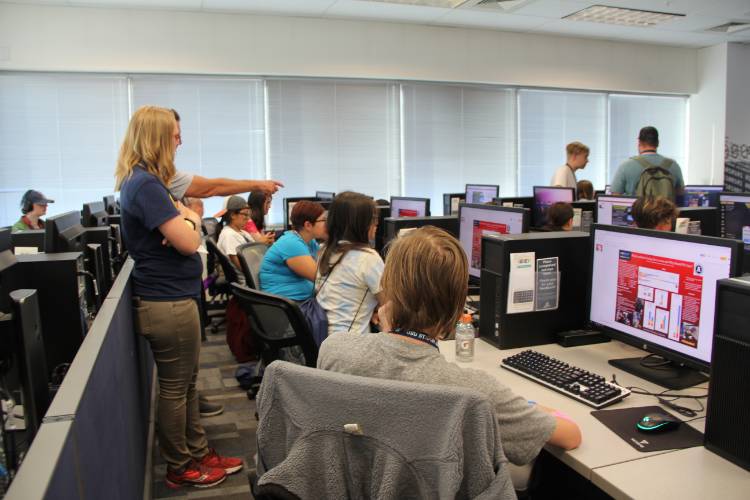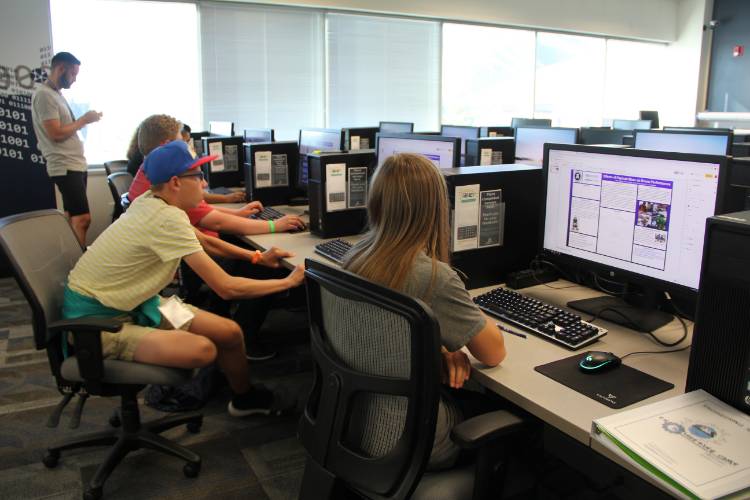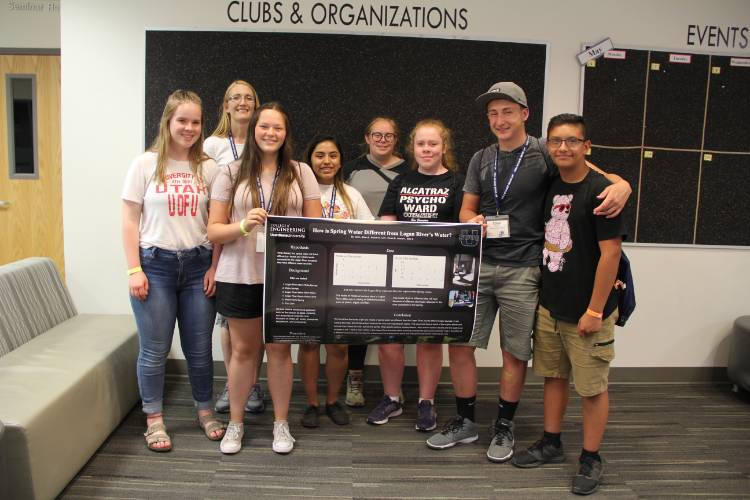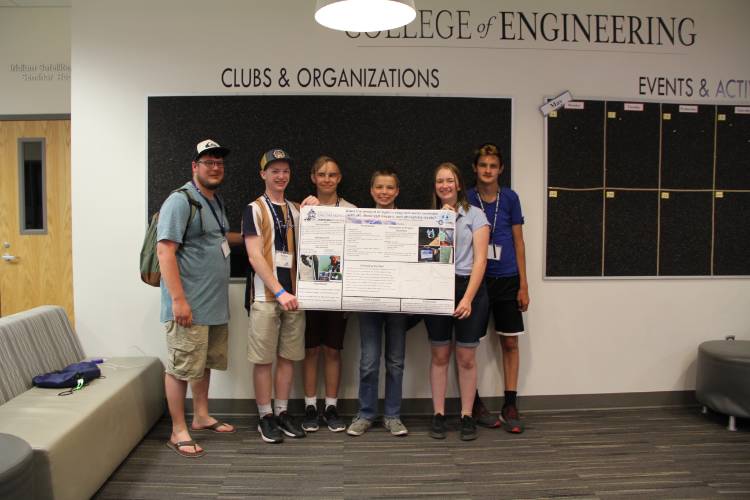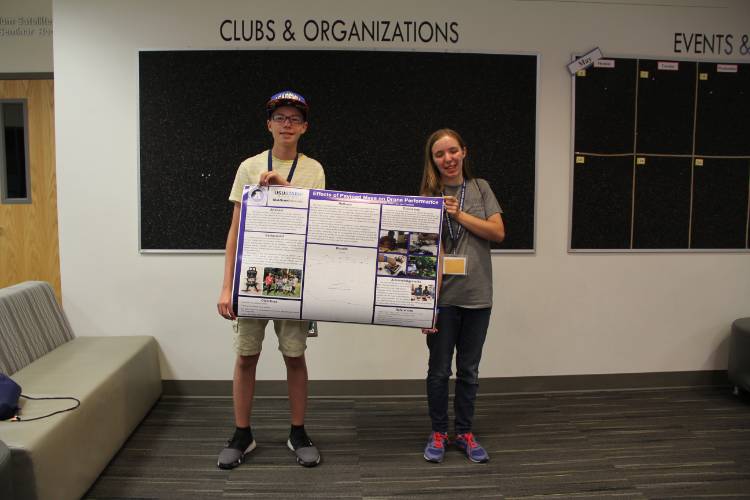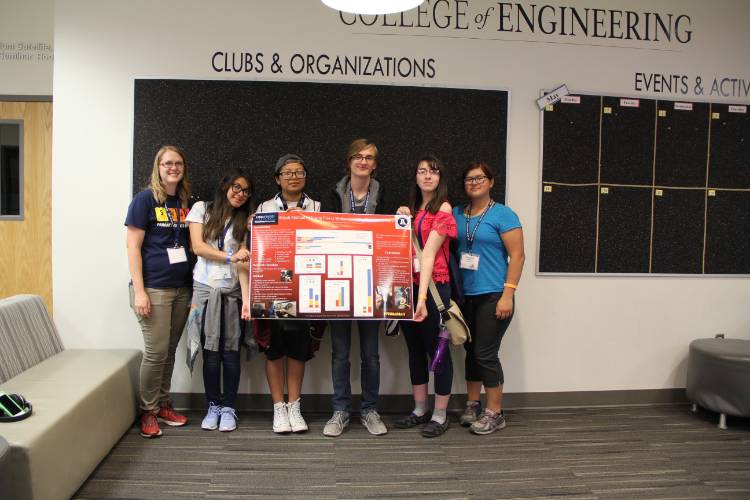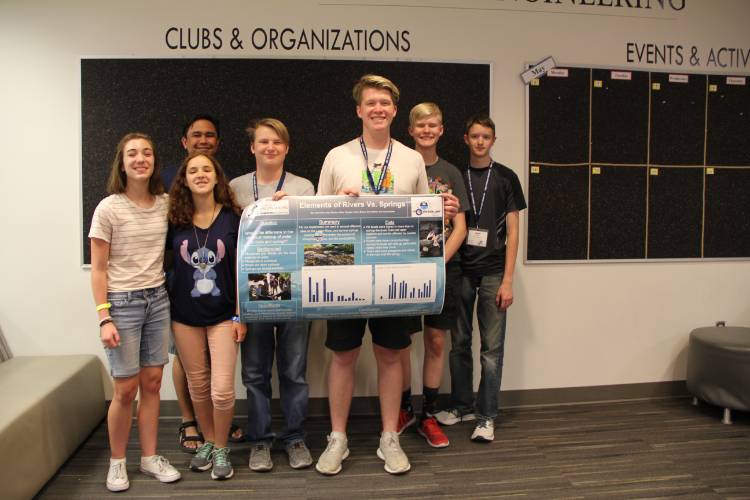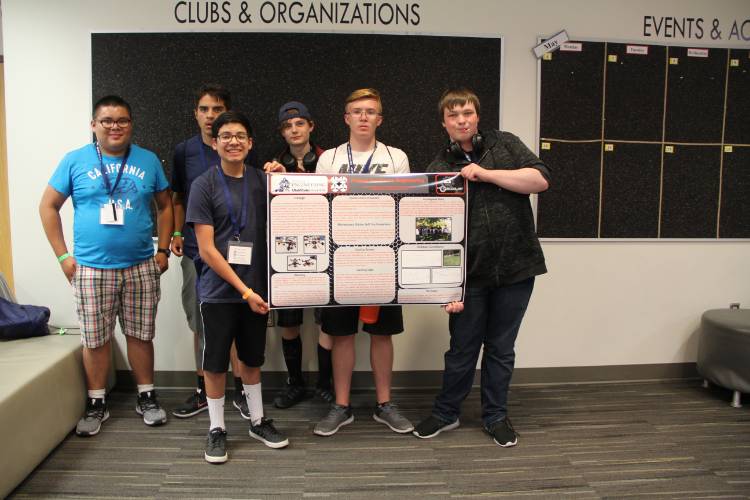Day 4 activities
The students split into groups and did one of the following activities:
Hyrum Reservoir Site Visit:
The students went to a local lake (Hyrum Reservoir) to ride a boat and collect more data about lake water and carry on with their work from when they visited first dam lake. They also observed and identified some invertebrates (bugs) that live in the water. One of the students commented about this activity saying: "Today I learned that bugs are smart in their way of survival." Another student said: "I learned the effect that sunlight has on different aspects of lakes and I would tell my friends about macroinvertebrates (bugs)." Another student commented: "I have learned how to take water samples!"
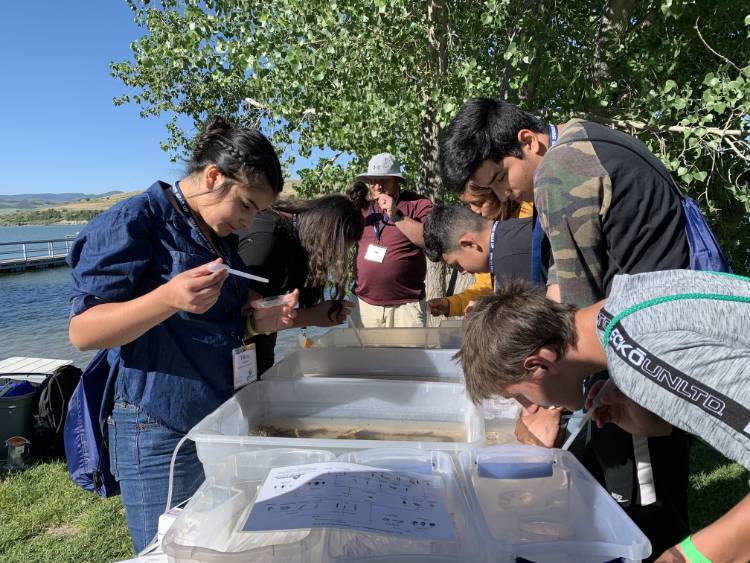

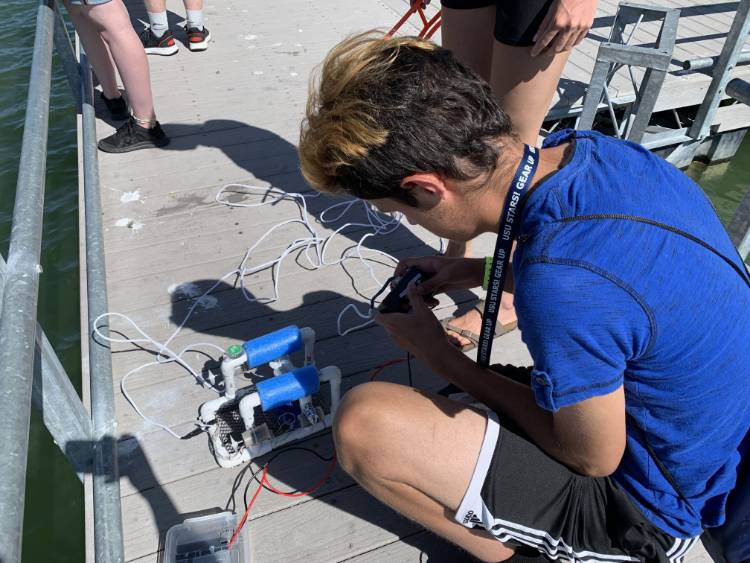
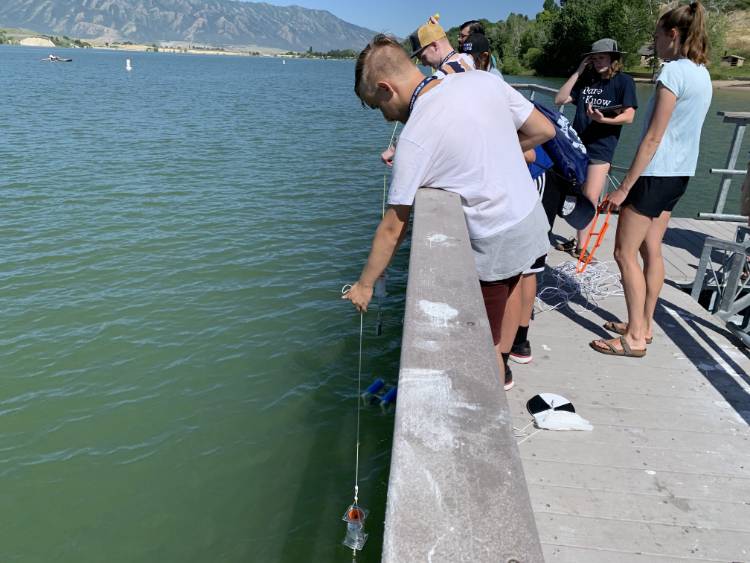
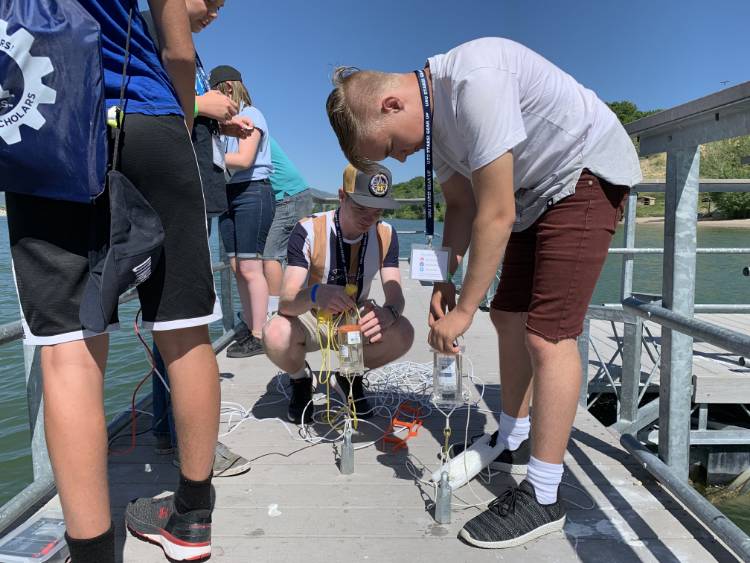
Logan Canyon Visit; GIS Streams:
The students took a hike up the mountain and took water samples and measurements at various stops along the Logan river. One student commented about this activity saying: "GIS Stream is so interesting, I would seriously consider a career in this field!" Another student said: "Getting water samples from rivers helped me see the difficulties of being a scientist, and I learned that water/snow can stay in caves for months up to a year." Another student wrote: "I learned how spring water differs from river water."

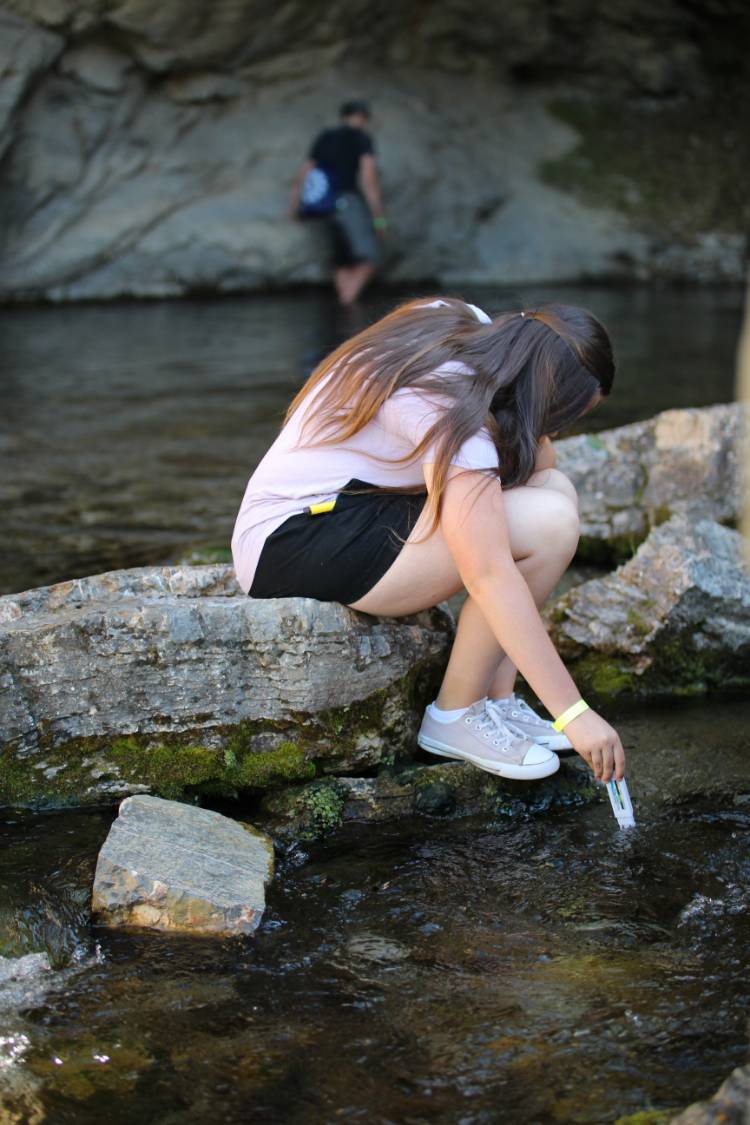
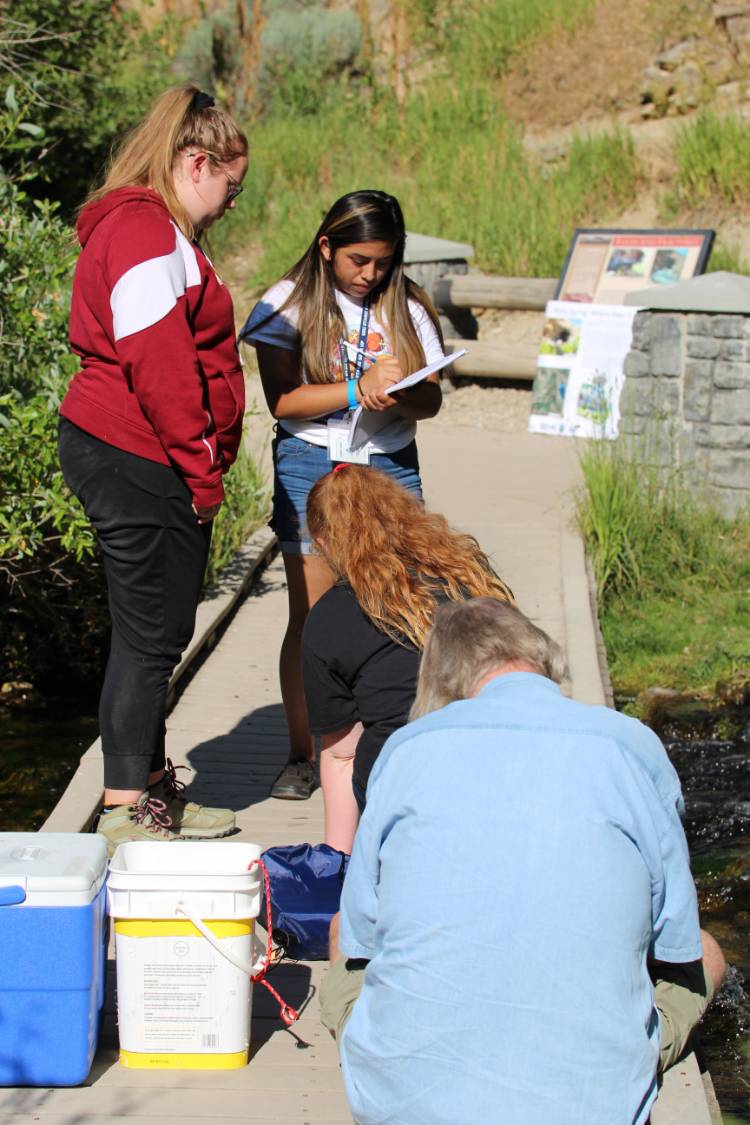
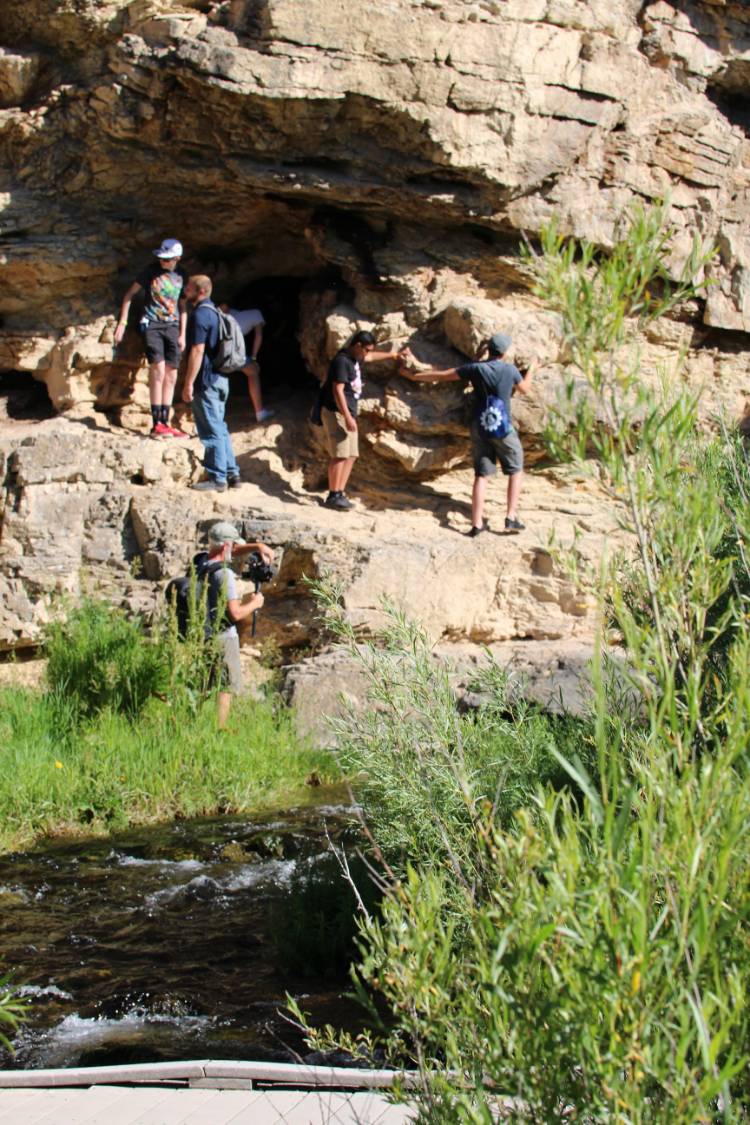
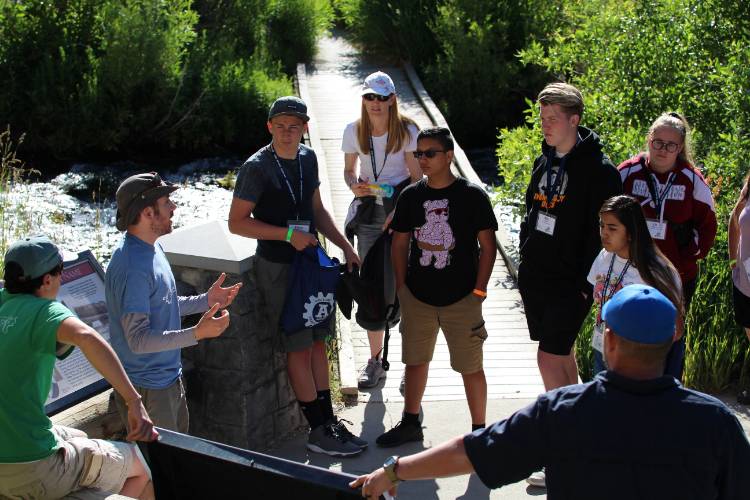
Aggie Air:
Students designed and assembled drones and then used them to collect data. Students enjoyed this activity a great deal and one of the students commented about this activity saying: "It was fun building and engineering a drone." Another student wrote: "Today I learned the amount of weight a drone can carry without truly affecting its results such as its mobility velocity and more. Also, the programming for drones is amazing and was so much fun. I really enjoyed it." Another student commented: "I would tell my friends that I designed a drone that was better at flying than the ones that were given to us."

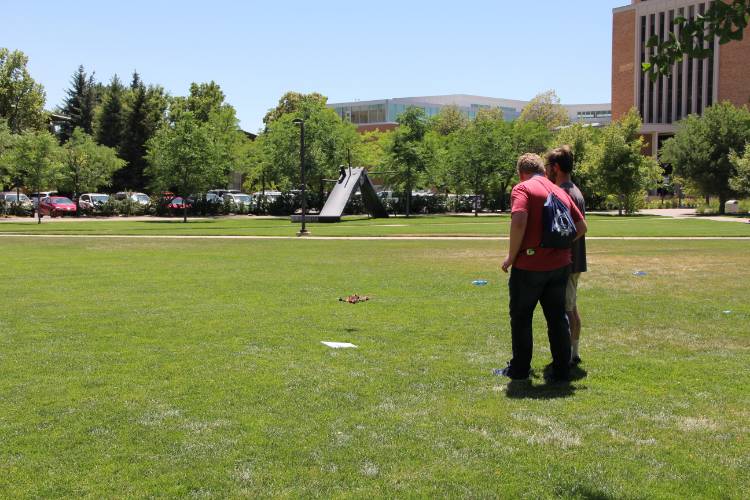
Air Quality:
Students assembled devices that can measure air quality based on the amount of particulate matter in the air at 10, 2.5 and 1 microns. Students then tested different sources of pollution such as car exhausts, candles, and camp fires to find the biggest sources of pollution. Students enjoyed this activity a lot and one of the students commented about this activity saying: "I learned that burning a crayon produces almost as much PM (Particulate Matter) as burning a cigar." Another student wrote: "I learned that different cars have different pollution output, and I would tell my friends to try to carpool as much as possible and also to make their pollution output smaller."
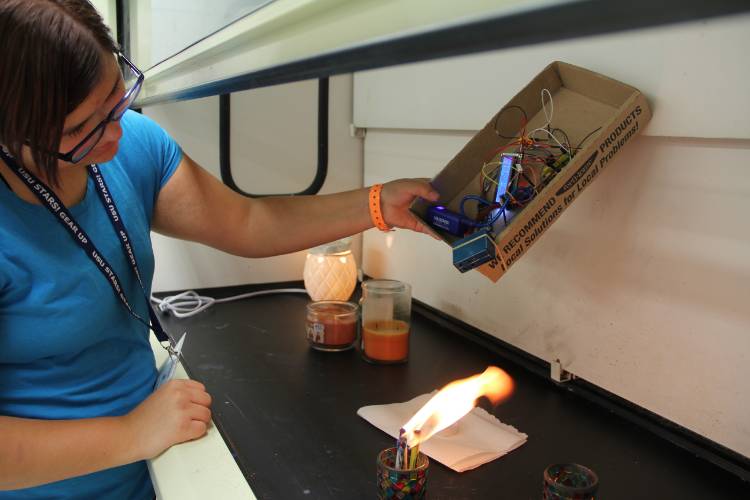
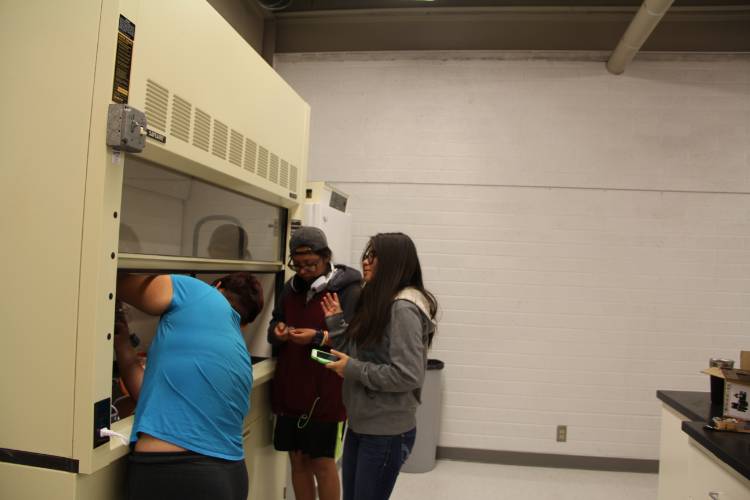

Creating Posters and Presentations:
Having collected data all week, the students split into their groups and worked for a few hours on creating a poster presentation about what they learned throughout the week. One of the students said in their journal: "Putting all of the information on a poster was strange. It made me thinking about the data in a different way. It was all so much fun." Another student wrote: "Working with Excel, it made me feel like a smart noodle!" Another student commented: "The poster got me thinking about teamwork, many things depend on teamwork."
